
TERRAIN TAMER has taken a huge step forward in renewing a long-forgotten suspension system with upgraded materials, technology and design. Sure, it’s a leaf spring design, but it’s very different to the old horse-and-cart system. The parabolic leaf spring design is currently available in some overseas markets, as well as in Australia for the trucking industry and for a very limited number of 4x4 models.
Terrain Tamer intends to change all that, initially with the introduction of Land Cruiser 70 Series kits (78 and 79 Series), followed by kits for many popular twin cabs that will surely raise interest given the claimed advantages.
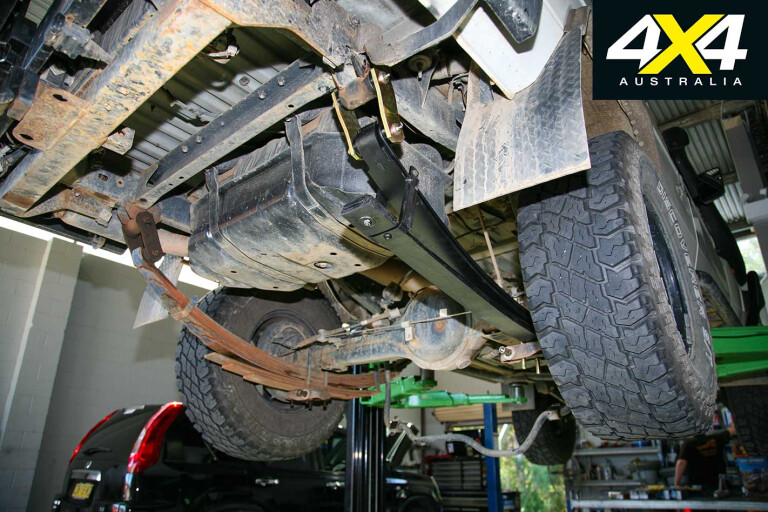
There is much hype, confusion and bullshit regarding parabolic leaf springs. They have seemingly been put into the too-hard basket for Australian manufacturers, leaving the more complex (compared to semi-elliptic leaves) fabrication and assembly to overseas markets.
But first, let’s outline the differences between a parabolic leaf spring and a semi-elliptic leaf spring, as fitted to the majority of rear-end Aussie 4x4s … well, the ones that don’t have the luxury of coils.
A semi-elliptic leaf pack consists of many separate leaves (from eight as OE, 11 for a 300kg kit, or more for an extreme heavy-duty pack). Each leaf within the pack is a separate length of flat spring steel of equal thickness from one end to the other, starting with the longest (and usually thinnest) at the top and ending with the shortest (and usually thickest) at the bottom of the pack. They represent a linear shape/return on spring performance. The more weight you need to carry, the thicker the leaves need to be – and the more you need of them.
Each leaf rubs on the one above/below as the suspension cycles; although, some companies use inter-leaf pads to reduce this friction. Depending on the exact design, each pack is bolted together at the centre and utilises spring clamps along the length to help ‘keep’ the leaves together.
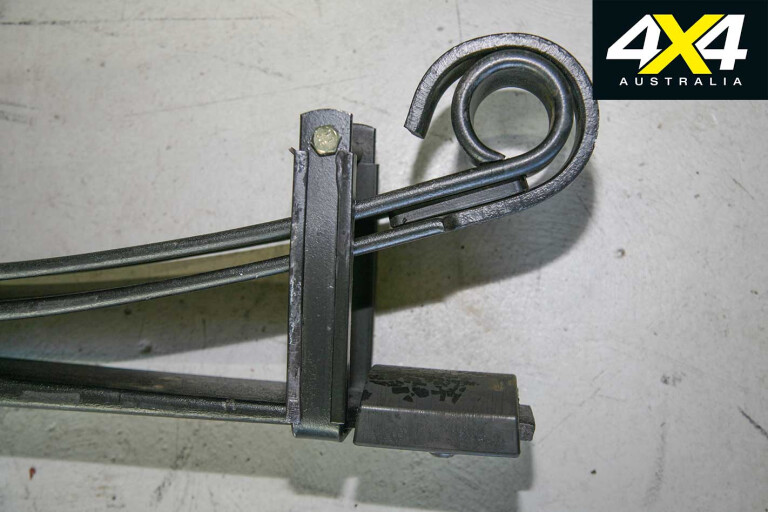
Eyes at each end have bushes fitted to the leaf pins of the 4x4; generally, the leading eye features a double wrap around the pin as a safety precaution should one leaf break, and the trailing eye hangs from a swivelling shackle with one-and-a-half wraps.
Parabolic leaf packs differ in many ways. Each leaf within the pack is tapered thicker (from the centre) to thinner at each end, in a parabolic shape. Basically, each separate parabolic leaf within the pack emulates a complete semi-elliptic pack from its side profile. Add leaves to form a pack and you have a parabolic-shaped curve of (in this case) three leaves, providing many advantages over a heavier semi-elliptic set that has more leaves.
The parabolic benefits
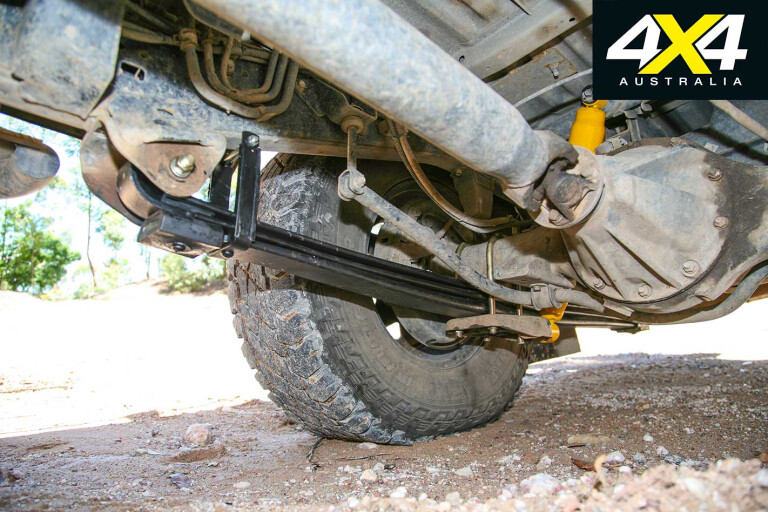
BENEFITS of a parabolic leaf spring over a standard semi-elliptic: lighter unsprung weight; tapering of each leaf returns load-carrying ability combined with improved ride quality both loaded and unladen; interleaf friction is (largely) eliminated given the leaves don’t touch each other; improved ride qualities and less chance of rusting and wearing; silencer rubber pads on lowest helper leaf prevents leaves touching each other, for a quieter operation; compliant and comfortable ride with any load; reduces shock induced from road unevenness back into vehicle components; a double military wrap at the shackled end and one-and-a-half at the fixed end; and improved flexibility off-road.
The negatives: if you break or damage a leaf – other than buying a complete new one to replace it – no other suspension repairer will be able to fix it; and there are no options at this stage for higher or lower load ratings or heights. There’s also limited range available at the moment, but that will change.
Measure everything
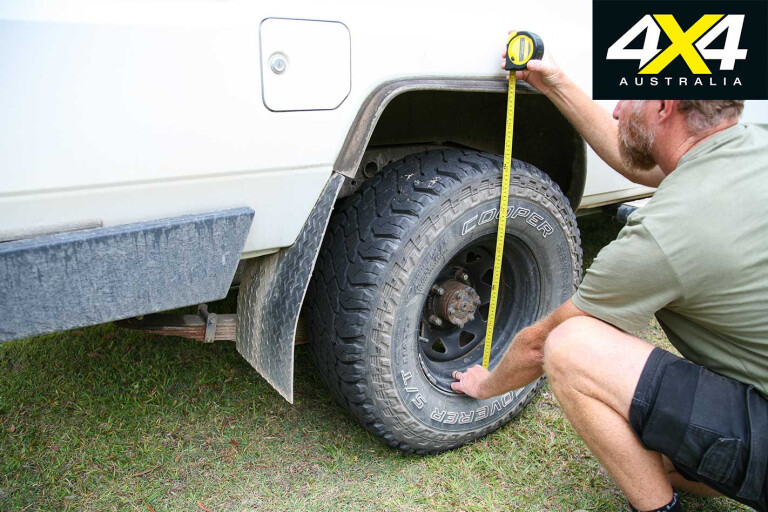
BEFORE changing from a 300kg Lovells kit, I measured every conceivable attribute of the kit while it was still on the Troopy. Once removed, I could further compare the Terrain Tamer parabolic leaves with the Lovells’, as well as the standard OE leaves that were originally fitted to my vehicle.
The OE eight-leaf pack weighed in at 50kg, the Lovells 11-leaf pack was 56kg, while Terrain Tamer parabolic three-leaf pack tipped the scales at a lightweight 33kg. Times that by two and it provides an overall weight saving of 46kg to the rear of my Troopy.
I loaded 750kg worth of sandbags into the rear of my Troopy prior to changing, in the process overloading the 300kg pack. I measured shackle angles, clearances under the shock mount, U-bolts and towball, as well as overall suspension drop at the rear and raising at the front.

Witness marks (rust and Texta lines) on the Lovells springs showed very little interleaf movement within the leaf pack; most movement was coming from the shackle pivoting. Not so with the parabolic leaves, with the pack of three leaves seen separating and compressing, and flexing up and down; shackle movement was also improved.
I even recorded vibration levels at 100km/h, as well as on a 0-100km/h run. Once I changed to the parabolic leaves every measurement was redone … even lifting 750kg of sand in and out of the Troopy.
Practically put to the test
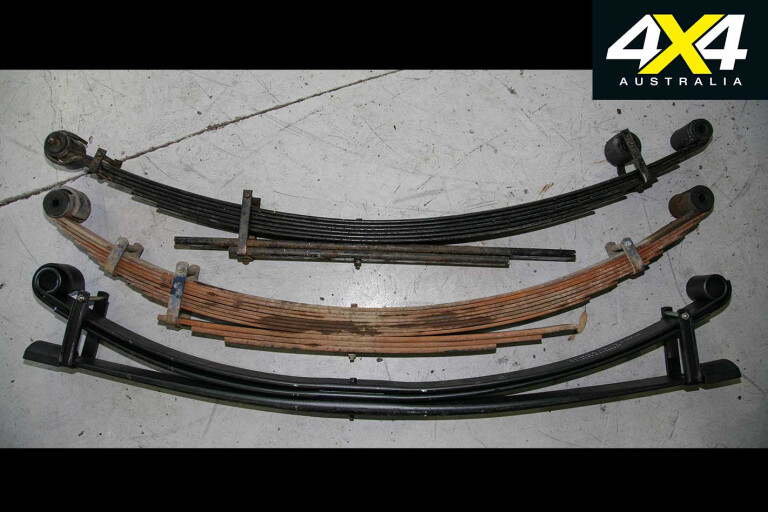
NOTHING has been left to chance to prove if the Terrain Tamer parabolic leafs are up to the task: loading 750kg of sandbags; knocking up a 20-degree suspension flex travel ramp; towing a camper trailer and hitching up a caravan; recording vibrations; off-road low-range crawling; scorching fast, corrugated dirt tracks; measuring everything that moves; and seat-of-the-pants feelings.
Study the table below and you’ll note, to my astonishment, the many improvements of the Terrain Tamer gear over OE and old 300kg kit. Aside from the improvements in load-carrying capacity and flexibility, check out the ground clearance gained via having a shallower leaf pack.
| OE | Lovells 300kg kit | Terrain Tamer 500kg kit | |
| Leaf pack weight | 50kg | 56kg | 33kg |
| Coil spring weight | 5kg | 7.5kg | 5kg |
| Height lost with 750kg loaded | N/A | +10mm (f); -50mm (r) | +10mm (f); -25mm (r) |
| Shackle angle loss with 750kg loaded | N/A | 6.5 degrees | 6.5 degrees |
| Height lost with caravan hitched (180kg ball weight) | N/A | +10mm (f); -35mm (r) | +10mm (f); -10mm (r) |
| Clearance under lowest leaf | N/A | 235mm | 275mm(r) |
| Clearance under shock | N/A | 185mm | 230mm(r) |
| Clearance under U-bolt | N/A | 175mm | 220mm(r) |
| Clearance lost under towball with 750kg loaded | N/A | 85mm | 60mm(r) |
| Distance travelled up 20 deg ramp - front | N/A | 1300mm | 1400mm(r) |
| Distance travelled up 20 deg ramp - rear | N/A | 1200mm | 1350mm(r) |
| Calculated RTI (Ramp travel Index) front | N/A | 436 | 469 |
| Calculated RTI (Ramp travel Index) rear | N/A | 402 | 453 |
Results
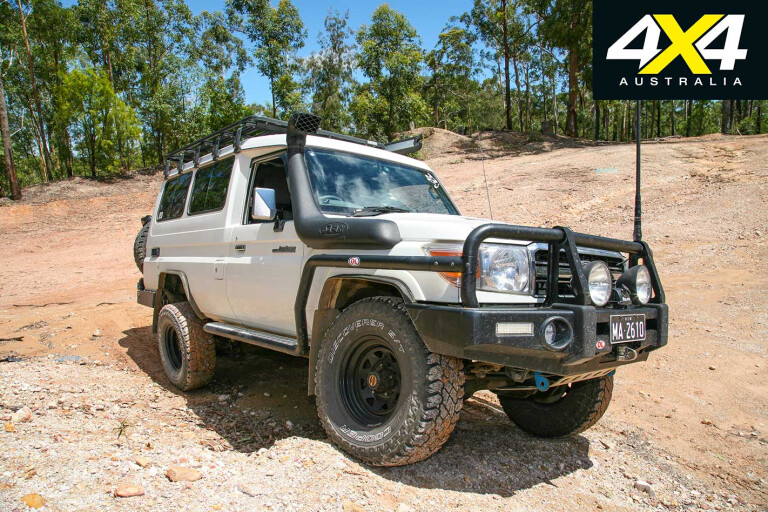
PRIOR to fitment – even though I’d convinced myself this modification was for the better – I was more than a little nervous and was prepared to return the Terrain Tamer gear if it didn’t meet my high expectations.
It only took the initial 20km drive home to accept I had little to worry about, with the comfort improvements as clear as day. On second-rate bitumen roads I was quite shocked (pun intended) as to how little jarring and harshness was being transmitted from the suspension through the cabin and up into my seat. There was no way I’d be removing this gear, regardless of whether it could carry a decent load.
The Terrain Tamer parabolics impressed with their ability to carry a load and return improved off-road flex ... in fact, there were zero downsides. It doesn’t make sense given all the leaf-sprung 4x4s I’ve driven over the past 35 years, but rest-assured, they work.
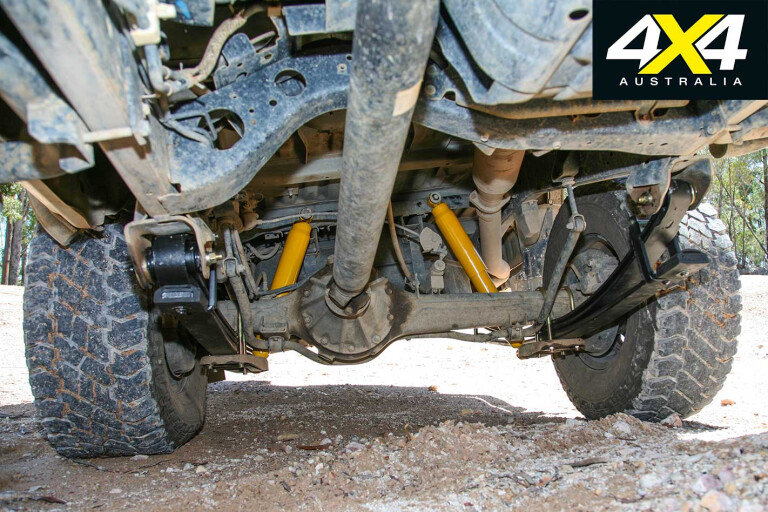
Would I recommend fitting the Terrain Tamer gear? Hell yes; although, there are a few scenarios where I’d give them a miss. If you’re running a vehicle that’s constantly near maximum GVM, if you want a GVM upgrade, or if you’re using a mining-spec leaf spring pack to cart maximum load all the time, I’d suggest parabolics aren’t for you. If you’re also after more than 50mm lift, then these parabolics aren’t able to ‘legally’ supply that lift.
If, however, you load your vehicle from near empty up to general ‘let’s go camping’ and occasionally up to maximum GVM – or even tow a caravan or camper trailer – then there are only advantages to be had in the swap, with the one proviso of perhaps throwing on a set of adjustable airbags for occasional extra-heavy loads. That’s exactly what I’ll consider in the future, pending how towing duties and maximum loads pan out.
These Terrain Tamer parabolic leaf springs have amazed in all facets of comfort and load-carrying ability up to their designated limits. Why did it take so long to make the change?
Procrastination 101
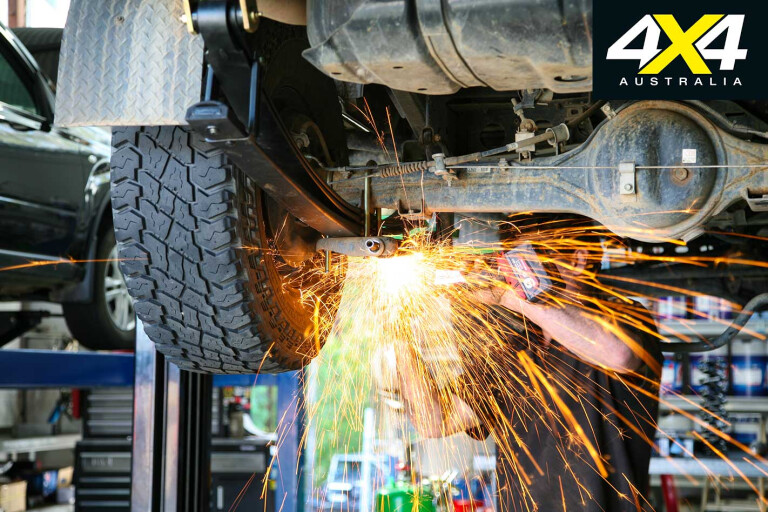
AFTER THE initial offer from Terrain Tamer to try out its newly designed parabolic suspension, I deferred for almost a week to do my own research. Given the kit was to be fitted to my own 4x4, I refuse to put any aftermarket gear on it unless I believe it will be made a better vehicle in some way.
I’ve been running the Lovells 300kg kit for well over a year and have been extremely happy with the way it handles my payload and tows my camper trailer and caravan. I’d figured, at the time of installation, if the 300kg pack couldn’t handle occasional higher loads or towing a ’van I’d stick on an airbag kit.
To date, I’ve been stoked with the Lovells gear and haven’t needed supplementary help with higher loads. The only downside was the overly firm and rigid ride while travelling empty or very lightly loaded, which was to be expected. Given I travel a lot with a light load, I had been on the hunt for a solution but couldn’t justify the high cost of converting the rear end to an aftermarket coil spring system, not that that’s a guarantee of a better ride.
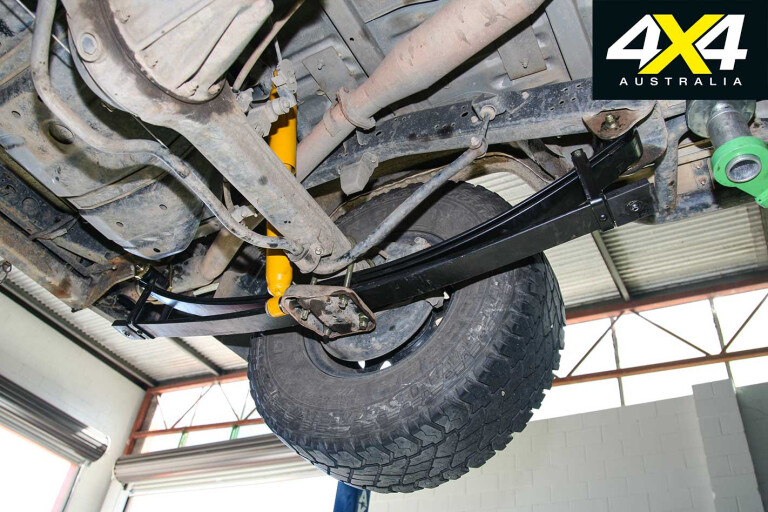
I’d already investigated parabolic leaf springs years ago, finding a lot of conflicting misinformation from both suppliers and users. Initially, my reply to Terrain Tamer was going to be “no thanks”, but I persisted with enquiries to spring manufacturers both in Australia and overseas and learned the only reason they aren’t made on home turf is because local manufacturers simply don’t have the machinery to make them.
Terrain Tamer claimed its three-leaf packs were rated at 500kg. Most other parabolic packs I had seen were rated at much lower carrying loads than that, closer to the 300kg mark; 500kg in a standard-style pack is pretty serious heavy-duty gear that’s more suited to high constant loads.
Quality materials make a massive difference in any product – crap canvas makes a crap swag and low-quality alloy on 4x4 rims is an accident waiting to happen. So too with suspension; instead of using run-of-the mill spring steel, Terrain Tamer sourced superior high-tech metals for its packs, which allows for the lesser number of leaves (combined with the design) that are capable of carrying a higher load, while still offering greater flexibility and comfort.
Given the claims I figured I’d give this test the nod, with the proviso that if they failed the kit would be removed and returned.
Shocking

I’M convinced this suspension kit has made my 4x4 better, but there are more improvements to be made – mainly in improving the control over the leaves and coils. Given the Terrain Tamer kit is more subtle both laden and empty, via more flexibility and initial softness from first impact, the shocks are doing more work than a stiffer, non-flexible system.
While the compression characteristics of the Terrain Tamer expanded wall heavy-duty shocks are great, the rebound dampening could be turned up a smidgeon. Given the parabolic leaves are ‘livelier’ than a standard pack, it stands to reason they will try to push and pull the shocks in and out faster.
When my Troopy wallows into a road depression at speed, the shocks compress and do a superb job of soaking up the shock in combination with the parabolics; on rebound, I feel the shock could be firmer to resist a second and sometimes third ‘bounce’ (which alters depending on the weight I’m carrying/towing). I’d be happy settling for the complete system as it is, but I’m being picky and on a mission to get the big white bus as comfortable as possible.

Here’s a potentially perfect fix: Terrain Tamer will soon be offering an updated Pro Shock absorber range. TT has had its remote reservoir, adjustable mono tube kit available for some time, but they are revamping and upgrading the units. Being able to adjust the valving on such a flexible suspension system to control the bounce via compression and/or rebound limiting will add a touch of finesse to the already impressive suspension system.
So stay tuned for the fitment of the new Terrain Tamer Pro Shock system. Will we be able to make a commercial lump of metal Troop Carrier float like a passenger-orientated 200 Series? I doubt it, but there is always that possibility.
Other gear fitted
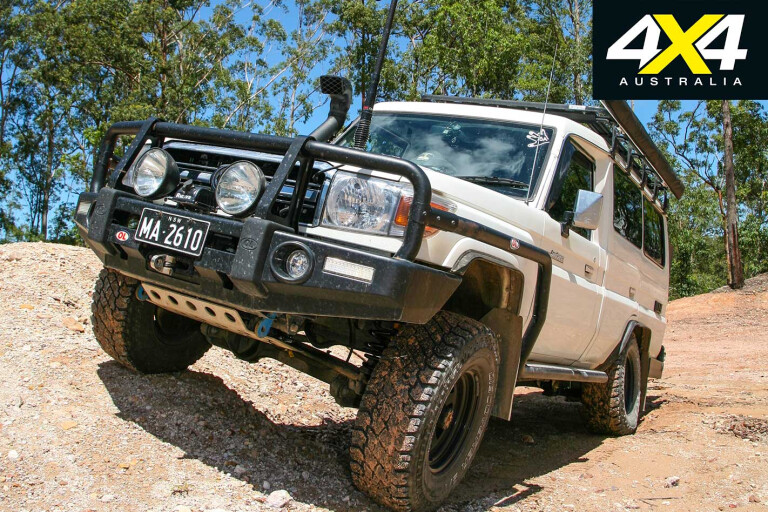
AT fitment we also changed the front coils to Terrain Tamer Smart Coils, which are, in fact, the same principle as the tapering parabolic leaf spring. Other manufacturers supply a similar product under the name of a progressive-rate coil spring, as compared to a standard linear rate coil spring.
Each Smart Coil tapers in diameter and changes pitch from top to bottom to provide a softer initial reaction to irregularities in the road, followed by firmer characteristics for carrying a load. I opted for the heavy-duty 100kg pair of coils to suit my Opposite Lock steel bullbar and RUNVA winch.
Just as the rear leaves offer a softer initial impact resistance, so too does the smart coiling of the front suspension which uses high-quality German X5 steel, similar to some other high-quality coil manufacturers in Australia.
Terrain Tamer Heavy Duty expanded shock absorbers round out the complete suspension package. Of note, the Terrain Tamer shocks are a little shorter than the long-travel Lovells set; although, they’re longer than OE. Given they are also shorter on compression, this technically allows for each wheel to push up higher during off-road flex. Theoretically, this doesn’t allow for as much droop.
Unfortunately, there are many factors contributing to overall suspension flex – both compression and droop – so just measuring the shock length doesn’t tell a complete story, even though that is a contributing factor. Sway bars, shackle length and angle, leaf spring clamps, interleaf slippage and leaf design all make a difference.
Given all that, I was pleasantly surprised the complete Terrain Tamer kit returned superior flex on my 20-degree suspension travel ramp.

COMMENTS